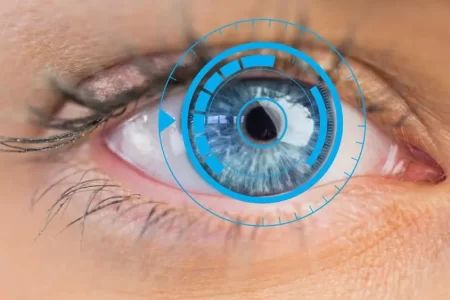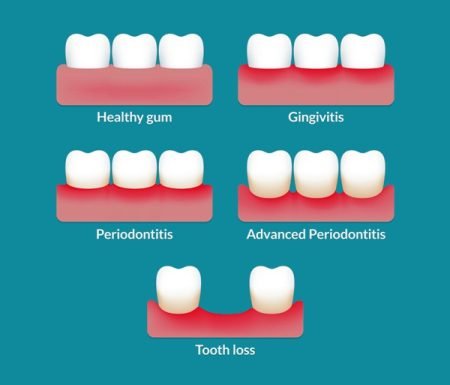
What is Corneal Transplant Surgery (Keratoplasty)?
A corneal transplant surgery is done to replace diseased or scarred corneal tissue with healthy tissue from an organ donor.
The cornea is a layer on the front of your eye that helps focus light. If the cornea is damaged, you might not see properly and might have it replaced. An eye surgeon will remove all or a part of your cornea and replace it with a healthy layer of tissue from a donor. The donor can be someone who chose to donate this tissue after their death.
Who needs corneal transplant surgery (Keratoplasty)?
A cornea transplant may be needed when eyeglasses or contact lenses are not effective enough to restore the vision, or if medications do not help the painful swelling in eyes.
A cornea transplant can be recommended by an eye specialist in many conditions, which involve damaged cornea, to correct certain eye problems. Some examples of these eye conditions are:
- Cornea scarring because of an injury
- Keratoconus: It is a medical condition characterized by the bulging out of cornea bulge
- Thinning, clouding, or swelling of the cornea such as in edema
- Scarring of cornea form an infection such as eye herpes or fungal keratitis.
- Corneal ulcers or sores
- Problems associated with an earlier eye operation that do not go away – for example graft rejection after a previous corneal transplant
- Certain inherited eye diseases such as Fuchs’ dystrophy.
- Scarring from trichiasis – in this condition, eyelashes grow inwardly toward the eye and rub against the cornea
- Irregular corneal shape
- Corneal failure due to cataract surgery complications
- Chemical burns of the cornea or damage from an injury
- Other conditions that can affect the clarity of your cornea and increase your risk of corneal failure
Are you a cornea transplant candidate? Is corneal transplant right for you?
A cornea transplant is done to enhance the vision. If you experience pain due to a diseased or damaged cornea, a cornea transplant may help relieve the pain or other symptoms such as swelling.
You should ask these questions before you decide for a corneal transplant surgery:
- Does your vision affect your job performance?
- Do you face difficulty in carrying out daily tasks?
- Are there any other ways through which your vision can be improved such as with special contact lenses or eye glasses?
- A corneal transplant surgery can be costly. How will it affect your financials if your insurance does not cover everything of it?
- The surgery may take six months to a year to fully recover. Are you ready to take an off from the job for this much of time?
- There are a few ways to perform the procedure? Which specific procedure is more suitable for your condition?
- What are the chances of corneal rejection in your case based on your consultation with doctors?
See also: Keratoconus: Causes, Signs, Symptoms, Diagnosis, Prevention, Treatment, and Surgery
See also: Screening and Diagnosis of Glaucoma
During the cornea transplant: What happens in a corneal transplant?
In a corneal transplant procedure, an eye surgeon removes the damaged cornea and replaces it with healthy tissue from a donor cornea. The new cornea is attached with stitches that may stay for up to 2 years. The cornea is then healed.
Some doctors have started using lasers recently to remove the diseased cornea and re-shape the healthy tissue from the donor. This procedure is known as IntraLase enabled keratoplasty (IEK). Laser allows conducting more precise surgery with fine details. Laser can reshape each layer of the cornea so that the new cornea fits your eye better. It improves healing and recovery.
The eye surgeon will first administer either local or general anesthesia, depending on your overall health, age, type of eye injury or disease, and your preference.
An injection is given into the skin around your eye to relax the muscles that control eye movements if it is a If local anesthesia. Eye drops are given to cause numbness to your eye. You will be awake during the procedure but you will not experience any discomfort.
An instrument called a lid speculum is used to keep your eyelids open and allow the doctor to perform surgery. He then measures the affected corneal area to determine the size of the donor tissue needed. Then, he will begin the surgery involving removing the damaged cornea and replacing it with the donor tissue. Your surgeon can choose from among the various type of surgery as discussed herein.
Types of corneal transplant surgery (Keratoplasty)
Full Thickness Corneal Transplant
It involves a penetrating keratoplasty (PK) in which all the layers of your cornea are replaced. The surgeon attaches the new cornea on to your eye with fine stitches that stay until it heals.
This type of corneal transplant surgery is generally done when you have a severe cornea injury or severe bulging and scarring due to eye conditions such as keratoconus. The recovery time is long in this procedure.
Partial Thickness Corneal Transplant
This type of surgery involves deep anterior lamellar keratoplasty (DALK). A surgeon injects air to lift the thin outside and thick middle layers of your cornea. He or she then removes only specific corneal layers and replaces them from the new ones taken from a donor.
The procedure is done in people with keratoconus or a corneal scar that affects only certain layers of the cornea for which full thickness corneal transplant is not needed.
Endothelial Keratoplasty
Most people who need cornea transplants have a problem with their innermost layer of the cornea. This layer is called endothelium. The surgery is done in cases involving Fuchs’ dystrophy.
Descemet’s stripping endothelial keratoplasty (DSEK or DSAEK) is the most common type of endothelial keratoplasty. In this procedure, a surgeon removes the endothelium and the Descemet membrane that rests above it. This is then replaced with a donated endothelium and Descemet membrane.
Getting ready for corneal transplant
Once you and your eye doctor decide a cornea transplant for you, your name is listed at a local eye bank. You may have to wait for suitable tissue donor for a corneal transplant.
Before a cornea is used for transplant from a donor, it is tested for any diseases such as hepatitis and AIDS, as per the medical guidelines and FDA regulations. Only those corneas that meet these regulations are used in corneal transplant surgery.
Before the surgery, your doctor may do an exam. He or she will order some tests to check that in good health and ready for the operation. He may ask you to stop taking certain medicines a few weeks before the surgery.
You’ll be given antibiotic drops in your eye a day before the procedure to help prevent an infection.
You should observe the following before a cornea transplant:
- Do not eat or drink anything after midnight the night before the surgery
- Provide details about where you can be reached the night before surgery
- Arrange for a driver or some friend or relative with you when you go for the surgery
What happens after surgery? How can you protect your eye after the corneal transplant surgery?
After the corneal transplant surgery, a patch and a shield will be placed over your eye. The eye shield and patch will be removed generally day after the surgery. You will be now given eye drops with guidelines about how to use them.
You must use your eye drops and other medicines exactly the way your doctor tells. For the first few months as your doctor suggests, you will have to protect your eyes at all times. You will be asked to wear glasses or eye shields.
Recovering from a cornea transplant
Total cornea transplant surgery recovery can take up to a year or longer. Initially, you will have a blurry vision for the first few months. Sometimes, the vision may be worse than it was before the surgery.
The vision improves gradually. As your vision improves, you will be able to see clearly and manage your normal daily activities well. Your doctor will ask you to avoid heavy exercise and lifting for the first few weeks.
Steroid eye drops will be given for several months to help your body accept the new cornea. Your doctor will also give other medications to control infection, pain, discomfort and swelling.
Risks and complications after corneal transplant surgery: Cornea graft rejection after a corneal transplant
Cornea transplant is a standard surgical procedure and the success rate is good. According to some reports, cornea grafts are the most successful of all tissue transplants.
Like any other surgical procedure, a cornea transplant has certain risks. These are:
- cornea graft rejection
- eye infection
- problems associated with stitches to attach the graft
Rejection of the donor tissue is the most common and serious complication after a corneal transplant. The rejection rate is about 5 to 30 percent. The chances of rejection increases is when your body’s immune system detects the donor cornea as a foreign body and tries to destroy it.
Having glaucoma or corneal swelling associated with a previous cataract surgery can increase your chances of cornea graft rejection.
Why cornea transplants are rarely rejected?
Rejection of corneal transplants is not common because the cornea usually does not have blood vessels. Without blood vessels, your body’s immune system is less likely to recognize and reject the foreign graft.
Signs of cornea rejection
The main warning signs of corneal transplant rejection can help prevent its failure. These are the common signs of cornea graft rejection:
- Pain
- Changed vision (reduced vision)
- Decrease in visual acuity
- Redness of eyes
- Photophobia
- Sensitivity to light
Rejection warning signs can be noted as early as one month or as late as many years after the surgery. You should contact your doctor as soon as you note them. Early treatment can help reverse the rejection process.
What happens if my corneal graft fails?
In case of failure of the corneal transplant, the transplant can be repeated. While repeat surgery generally has good outcomes, but the overall rejection rates increase as the number of corneal transplants increase.
What happens to vision after keratoplasty?
After the surgery, some patients report significant improvement right after the next day of surgery. Astigmatism is common after a corneal transplant surgery.
A patient’s vision tends to fluctuate for a few months initially. One might note significant vision changes for several months after the surgery.
Generally, hard, gas permeable contact lenses are recommended to get the sharpest vision after a corneal transplant. This is due to a residual irregularity of the corneal surface.
After the cornea is healed completely, a laser procedure such as LASIK may be advised. Refractive laser surgery can reduce astigmatism and further improve the quality of vision. Sometimes, the vision may improve to an extent that you might not even have to wear any eyeglasses or contact lenses.






